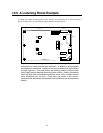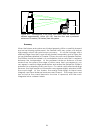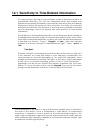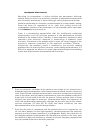61
Designing for Accurate Bass Reproduction
How, then, does one arrive at the goal of a loudspeaker that provides tonal
accuracy in the listening room? The answer, in large part, comes in the form
of the digital computer. It is possible to create a mathematical model of a
listening room, and predict the response of a given speaker in that room. With
the computer model, it is quite easy to change the position of the speaker in
the room, or other parameters of the model. In this way, a composite picture
can be created of a wide variety of rooms and speaker locations. This
enables one to design the speaker so that it interfaces properly with the
listening environment and provides correct bass response in real-world
environments.
The accuracy of the computer model must also be tested in the physical
world, using pink noise, warble tones, and time-delay spectrometry for
verification. The final, and most important check, is the listening test. Theory
and measurements become useless if they do not agree with what our ears
tell us. Even the best measurement methods provide little more than a
simplified, one-dimensional translation of what is, in reality, an extremely
complex, multi-dimensional experience. Again, the goal is the recreation of a
musical event, and the faithfulness of that recreation can only be determined
through listening.


















